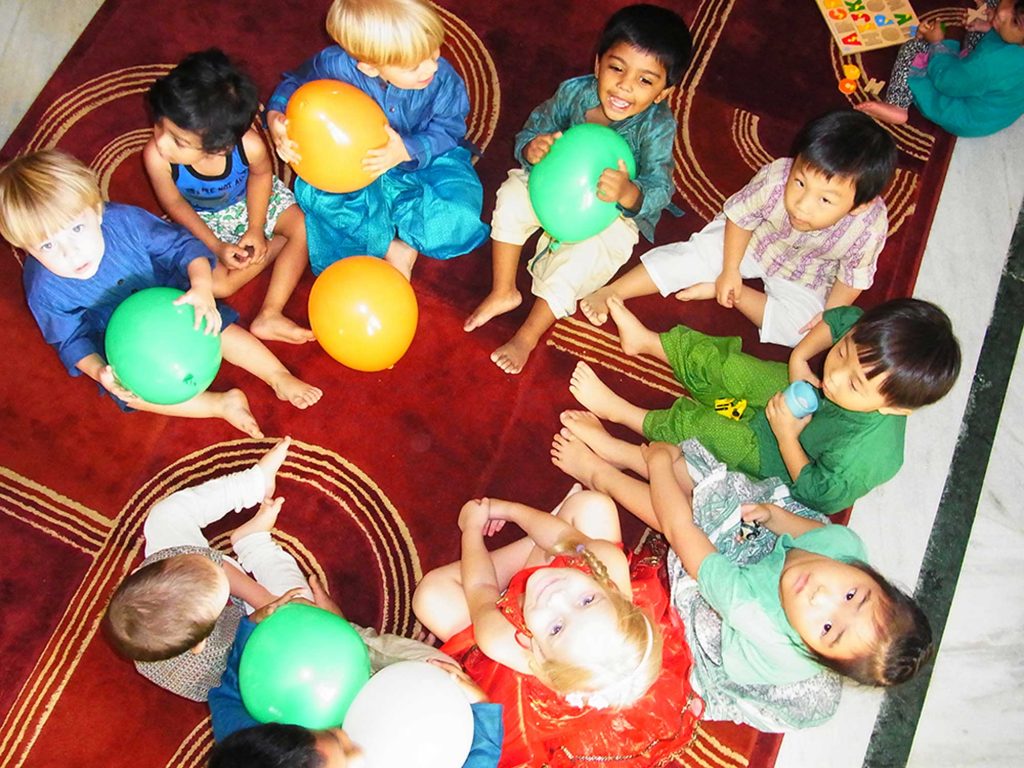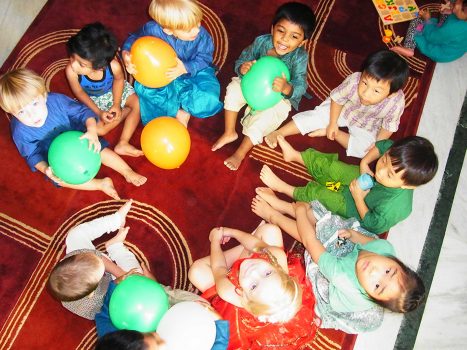Antara Kothari points out how the school should be the right fit for the child as it is not just about academics, but learning life skills as well
 Friday, June 7, was the first day of the new academic year for my five-year-old son Dev. He had graduated to UKG, a fact that dawned on me when I dropped him off at school. I can remember myself so clearly in UKG still. It was surreal how there was now a mini-me trying to hurl himself out of the moving car, to get inside quickly. The happiness that emanated from his face made my heart skip a beat; nothing is more comforting for a parent than to see their child excited to go to school every day. Pick-ups after school are usually filled with a stream of stories about in-class activities, new facts learnt, conversations with friends and teachers, and so on. This was a good indication that we had made the right choice when selecting the school as this decision had not been taken lightly. I have always strongly believed that a school should be fit for the child, and not vice versa.
Friday, June 7, was the first day of the new academic year for my five-year-old son Dev. He had graduated to UKG, a fact that dawned on me when I dropped him off at school. I can remember myself so clearly in UKG still. It was surreal how there was now a mini-me trying to hurl himself out of the moving car, to get inside quickly. The happiness that emanated from his face made my heart skip a beat; nothing is more comforting for a parent than to see their child excited to go to school every day. Pick-ups after school are usually filled with a stream of stories about in-class activities, new facts learnt, conversations with friends and teachers, and so on. This was a good indication that we had made the right choice when selecting the school as this decision had not been taken lightly. I have always strongly believed that a school should be fit for the child, and not vice versa.
Views on what makes a school ‘good’ varies for each family — distance, its popularity, the board of education, infrastructure and facilities, teaching styles, learning styles, and so on.
My husband and I took a slightly different approach; we first listed down what we did NOT want in a school. This included an unstructured environment, traditional teacher–student instruction, student assessment solely made on grades and written examinations, and long school hours at the playschool level. We then spoke to friends who were veterans in school selection for their feedback based on their experiences. However, the final decision was made also considering Dev’s personality and character, and whether the school would be a good fit for HIM.
The top five qualities that we considered vital were board of education, approach to learning and teaching, quality of teachers, safety and distance. The values of the school as well as balanced parent involvement were equally vital in the selection. Facilities like sports were a factor, of course, but with external classes easily available, it was not our No. 1 priority.
Board of Education
Many international boards of education that have paved the way for success for students globally have now taken over the education landscape in India. After in-depth research, I found tremendous alignment between the goals of international boards and my vision for my children’s education. I was inclined towards a structured method of education that would help my children become good people; an education that would consider not only their mind but their heart as well. A combination of academic intelligence with emotional and social development was a fundamental requirement for us. Children require certain other skills that will enable them to relate to the world around them to be developed parallelly – kindness, empathy, confidence, team work, and so on. I also wanted a system that would stimulate imagination, wonder and creativity, and encourage my children to understand and not memorise. I did not want them to crack under the pressure of examinations and grades that would judge and define their level of learning based on educators telling them what and how to think.
Approach to Learning
Modern education systems implemented by some schools prioritise ‘how to learn’ over and above ‘what to learn’. Their goal is to start preparing students from the time they are in preschool to tackle anything that is thrown at them out in the real world. To do so, cultivating independence in thinking and learning is key. I was keen on a school that would develop the understanding and application of concepts taught, by encouraging hands-on learning and thinking. Children should retain their wonder, imagination and creativity; and so an environment that would stimulate them both physically and mentally was crucial.
Approach to Teaching
International methods of education lean towards partnerships between teachers and students. In the IB (International Baccalaureate) board teachers encourage students to take responsibility for their own learning by guiding them to ask the right questions, consider the viewpoints of others around them and reflect on the process of decision-making.
Quality of Teachers
One of the biggest assets that any school can have are teachers who are able to form attachments on many levels with young children. Young children thrive in a nurturing environment filled with happiness and love from those around them. The ability to listen and comfort is one of the most admirable qualities in teachers and requires immense patience, especially with the young ones. The warmth and affection that children experience can turn their day around, and this is what encourages them to look forward to school the next day. Learning is not feared but welcomed.
Schools also facilitate internal and external training for the teachers in the form of workshops that makes them a better teacher. Their ability to roll out the curriculum depends largely on the rigorous and continuous training provided to them to be able to guide students in the right direction.
 Safety
Safety
The safety of a school topped the list when we were scrutinising schools. Most schools have CCTV cameras to monitor the halls and classrooms. It is important to also evaluate how vigilant the faculty members and helpers are. All schools have safety guidelines or laws which they are supposed to abide by. For example, Dev’s school insists on only the parents coming to pick up the children. In the event of another family member or caregiver picking up the child, one of the parents is expected to send an e-mail the day before with the name and photograph of the person. Without confirmation from the parents, the teachers do not let the child out of the gate with anyone. Whether your child is a boy or a girl, the safety precautions to be taken remain the same.
